It’s late September now and that means one thing. No, not footy finals; spectacular gardens.
After a week in the nation’s capital visiting the spring display gardens at Tulip Top Garden, and Floriade The Garden Clinic is back in session.
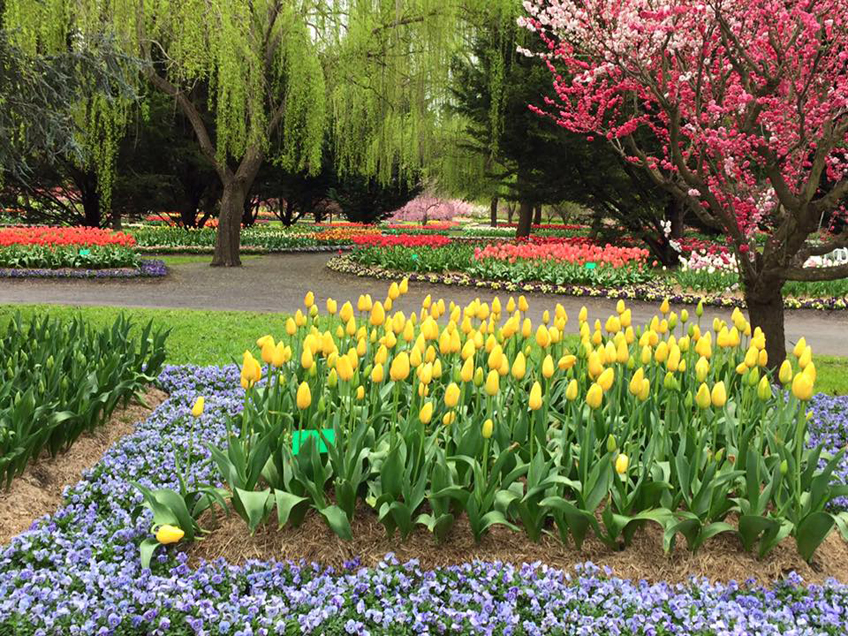
Check out Tulip Top Garden now while the crowds are thin. Photo - Graham Ross
And this week The Garden Clinic is delighted to announce we have Garden Talkback every day! Woohoo! Linda Ross will bring you Talking Gardens on air Monday - Friday 12-1pm on the new Talking Lifestyle 2UE 954 and, as always, join me, Graham
Ross, on Saturday and Sunday 6-9am on 2GB 873 Sydney and 4BC 1116 Brisbane.
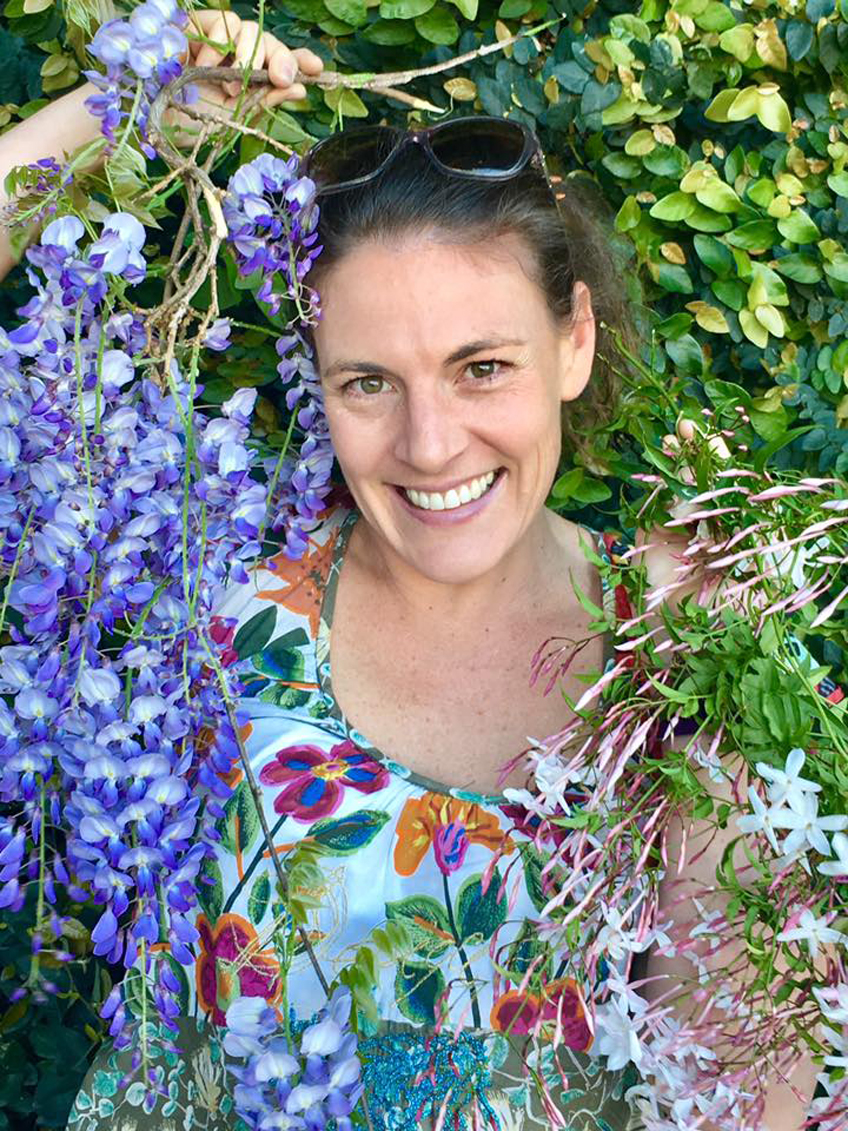
In celebration Linda has draped herself with spring flowering climbers - the topic of the day - Horray! Photo - Dan Wheatley
This week we talked basil, how to use it and other herbs to plant now. Plus your calls on the open line.
It’s Time To
Discover
We spotted this awesome waterfall of flowering rock orchids growing on the trunk of a jacaranda. If you look closely you can see the gardener has put up
pockets of paperbark to rest them in.
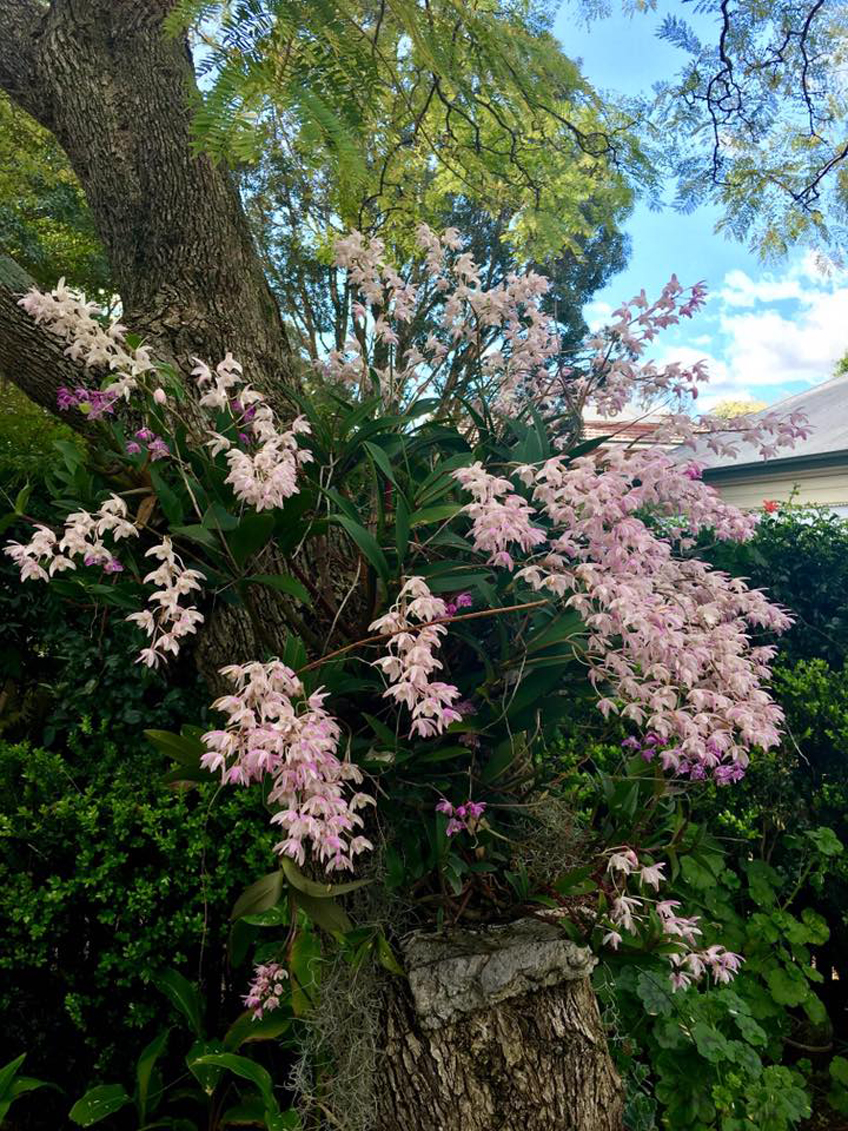
Photo – Linda Ross
Admire
It’s one of the pest plants for shaded places. And it’s right now that clivias are at their best. Choose stunning new varieties like lemon or simple orange
like these clumps of clivia pictured, colouring up dry shady spots under trees.
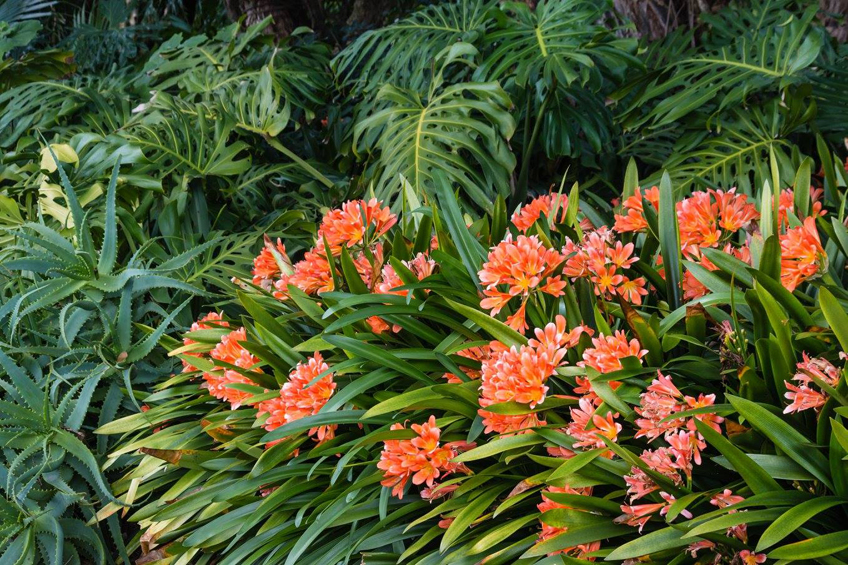
Photo – Linda Ross
Colour
The soft blue haze of hydrangea flowers are a promise of summer. And it's surprisingly easy to intensify the blue of hydrangea flowers too. In spring,
top up mulch and give regular, deep water throughout the warm months. Drying out damages flowers and weakens plants. Apply blood and bone, a controlled
release fertiliser and give plants a fortnightly application of Powerfeed for Flowers & Fruit. Take soft-tip cuttings to propagate. Re-pot potted
specimens in early spring.
Want more? go to the Garden Clinic Facebook page, hit 'Like', and you can read up on how to keep ypour hydrangeas looking their best, plus lots more every day!
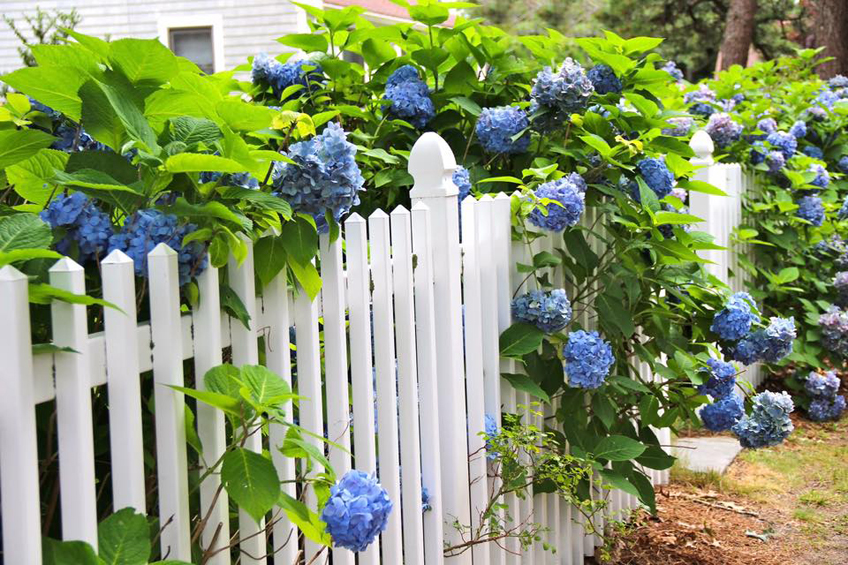
Blue up your hydrangeas this spring. Photo - Linda Ross
Hit the road
Make a day of it! head up to the gorgeous Mt Wilson and see the fantastic world-class gardens opening their gates to the public this weekend. It's one of Sydney's greatest garden treasures and is fully
funded and run by the local community. Well worth our support.
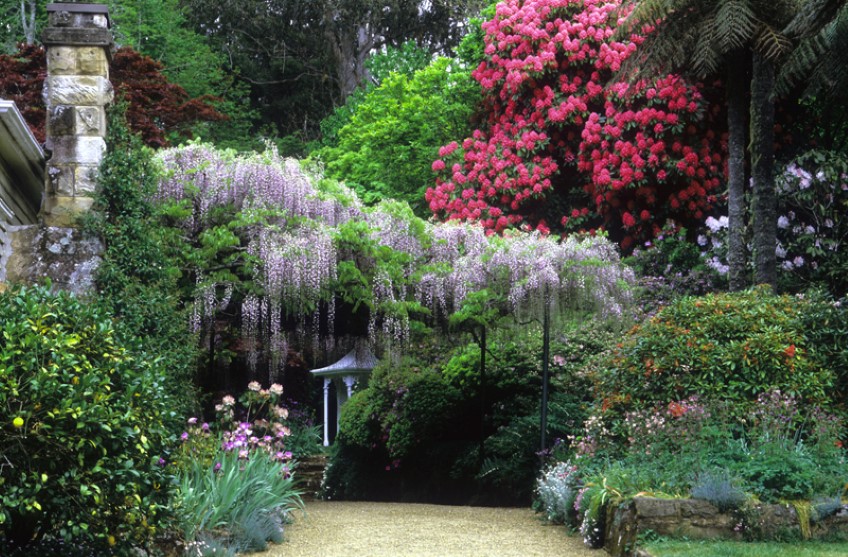
The magnificent Nooroo, just one of the open gardens at Mt Wilson this weekend. Photo - Lorna Rose
Bush garden
Coast Myall Wattle Acacia binervia
Also known as A. binervata, A. trinerva, A. glaucescens
A handsome, upright, spreading small tree from coastal NSW and Victoria found naturally in a wide variety of soils from heavy clay to rocky outcrops and
sandy loam. This makes it very adaptable to a wide range of garden situations.
Year round foliage colour is a striking light grey derived from its soft, felted or hairy large flat leaves.
The leaves are actually phyllodes not true leaves and generally display two or three main veins.
This Wattle is normally seen as a spreading shrub 4-7m wide but often grows, with age, to 7-8m tall. Old trees can reach 15-16m tall in a forest situation
as the tree is surprisingly very long lived for a Wattle.
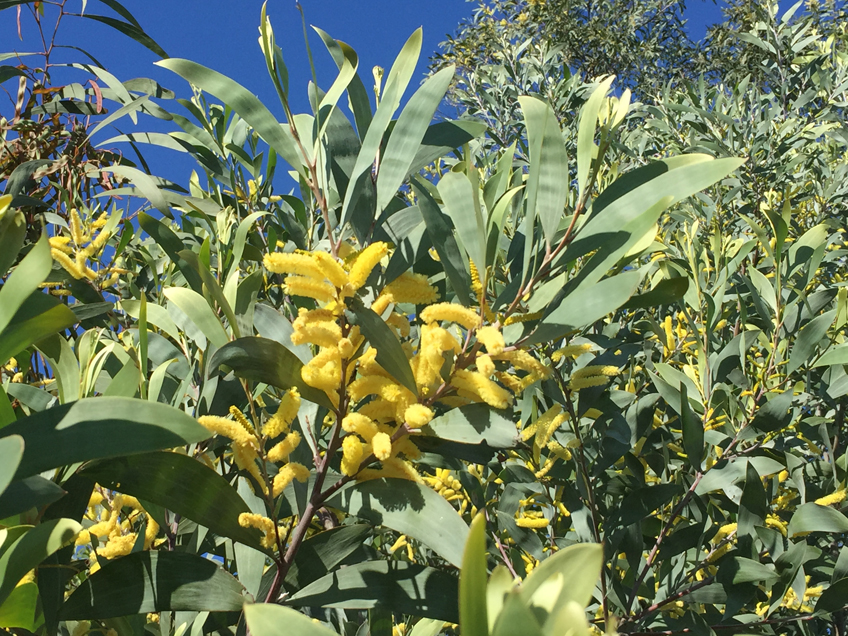
The handsome Coast Myall Wattle is very adaptable in a wide range of gardens. Photo - Graham Ross
It is tolerant of frost and drought conditions.
Don't plant where livestock can graze on the trees as the leaves are toxic to cattle.
But it is the beautiful, cylindrical pale to bright yellow flowers in August to October that make this an excellent garden Wattle. Each striking flower
spike is 2-6cm long.
Seed pods are flat with a slight twist 2-8cm and very attractive to parrots and all seed eating birds.
A great small shade tree for a garden with an open upright habit, with beautiful leaves and winter spring flowers.
Bugwatch
Pelargonium rust
Pelargonium (geranium) rust is a common fungal disease of zonal pelargoniums or what we used to call geraniums but are actually pelargoniums.
This disease survives on pelargoniums alone as the plant acts as a host.
The fungal spores can survive for weeks on leaf litter so it's always a good idea to practice good hygiene with pelargoniums and dispose of fallen leaves.
It is important not to hose or splash water on leaves as the disease spores are spread by water and wind.
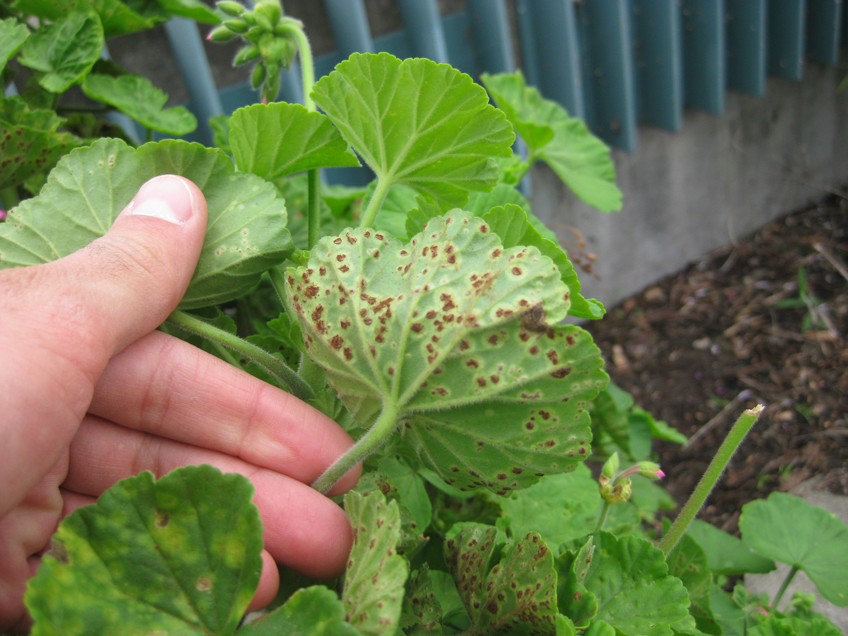
Pelargonium rust is a common fungal disease affecting geraniums. Photo - Graham Ross
The first signs of the disease are yellow circular spots on the upper leaf surface and brown pustules underneath which burst open spreading the disease
spores further.
Because the fungus actually feeds on leaf tissue it eventually turns yellow and drops.
The disease can remain latent through winter, even on cuttings, not becoming a problem until warmth and moisture appear in spring.
Control
Keep plants in pots on the drier side and water the soil for garden grown plants.
Keep plants growing vigorously and well fertilised with blood and bone every three months and apply a granular fertiliser and liquid nutrient every 2-3
weeks in the warm, growing seasons.
Non organic sprays
Yates Rose Gun Advanced RTU
Organic sprays
Eco fungicide or
Eco rose
To increase effectiveness add Eco seaweed to the spray.
If all else fails and controls don't solve problem especially on heavily infected plants it may be sensible to dispose of plants in the bin and commence
anew.
Garden News
Meet Robert McDougall, PhD Student looking at the productivity of community gardens
Robert McDougall is a PhD student with the Department of Agronomy at the University of New England. Robert is investigating the role that ecosystem services
play in the productivity of urban food production systems; that is, how productive community gardens are in the wider Sydney region.
Robert is only part way through his research. His findings so far support the long-held view that gardening promotes good health and well-being. But what
surprised Robert most is that these community gardens are also very productive.
Asking community gardeners how much their patches produce usually gets the same response; “We’re not interested in producing lots of food, it’s more about
the fun of gardening.” But despite this, most are surprisingly productive - close to what commercial gardens would produce per square meter over a
year.
We look forward to having another chat with Robert in the future as more of his findings begin to take shape.
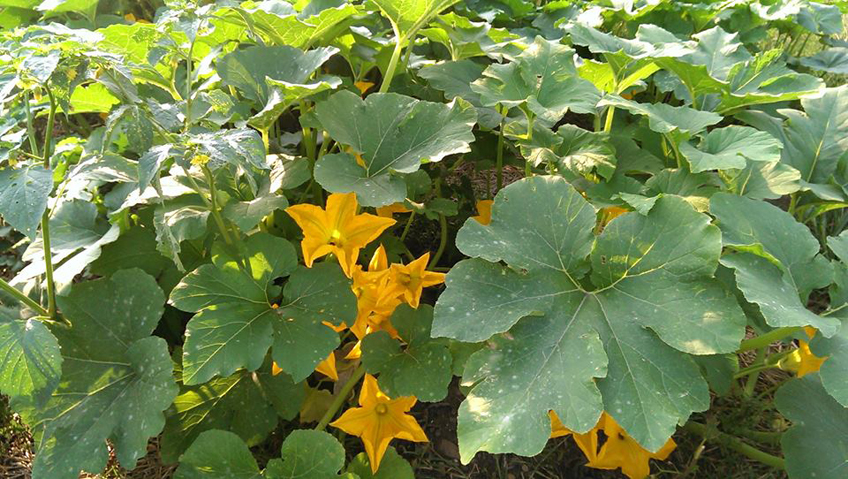
Pumpkins flowering in one of the community gardens Robert is studying for his PhD thesis. Photo - Robert McDougall
Hollows as homes
Dr Adrian Davis cares a lot about the rate at which dead wood is being removed from gum trees in our suburbs. Why? because the hollows that are left behind
when a tree branch dies become homes for all kinds of native animals, from parrots to possums - lizards to frogs.
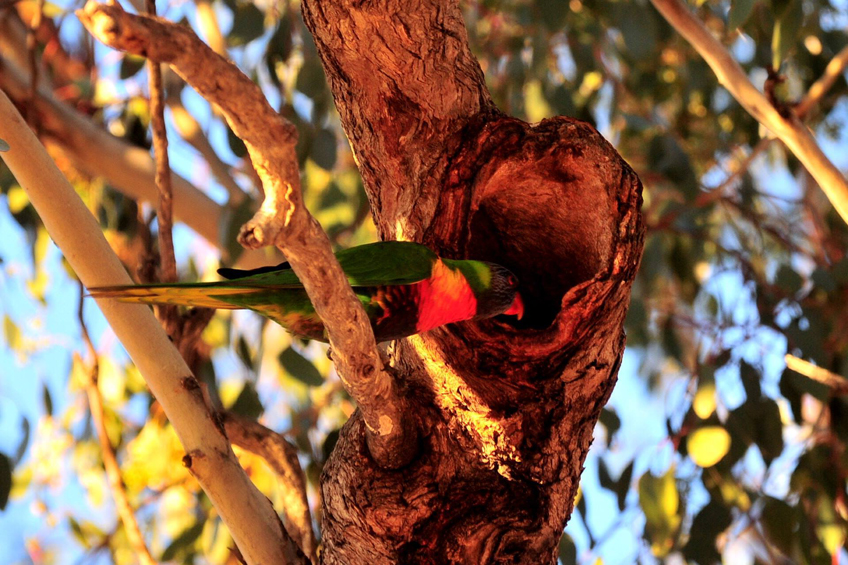
A lovely laurie in the market for a new hollow home. Photo - Hollows as Homes
For decades public policy advocated the removal of dead wood, and dead trees from public space, which had a dramatic effect on available habitat for native
animals. Now we are beginning to see the errors of our ways.
We know now that tree hollows are a vital habitat for many animals – in NSW alone, hollow-dependent animal species include at least 46 mammals, 81 birds,
31 reptiles and 16 frogs. Of these, 40 species are threatened with extinction.
Hollow-bearing trees in urban areas are often removed as a safety precaution but a new method of cut-in hollows has been developed, which safely retains
trees while allowing hollow habitat, which is important to conserve biodiversity.
Dr Adrian Davis invites all of us to get involved, help assess tree hollow availability in your area and help preserve important habitat for tree-dwelling
native animals. Register a tree hollow in your area at the Homes as Hollows website. You can also register a wildlife siting.
Need something to do this Spring Sunday 25th? Join the North Sydney Presentation and Walk and Talk. Hear a Hollows
as Homes presentation and then go test your hollow spotting skills in the nearby park during the walk and talk! During the Hollows as Homes talk and
walk event, Dr John Martin, Wildlife Ecologist for Botanic Gardens and Centennial Parklands, will teach participants how to spot a tree hollow and
how to help create hollow habitats in their own backyard. It’s vitally important that we protect our natural habitats and local species for future
generations.
Come away with us
Melbourne Cup Tour 2016
Go behind the scenes at The Race That Stops The Nation (TM). Special visit to see the Flemington racecourse rose garden before the race, when the roses
are looking their best. Highlights include the Coombe Melba Estate, Cloudhill Garden, Werribee Mansion and the Victoria State Rose Garden.
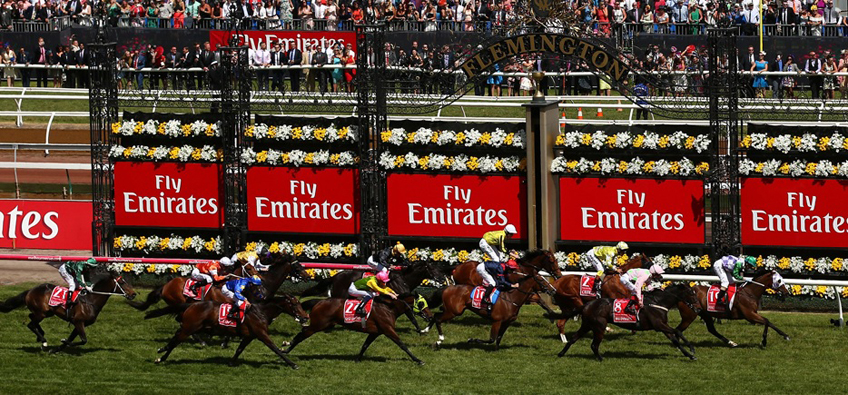
It's the race that stops a nation (TM) and a floral display that stops a nation of garden lovers!
If you would like to know more about the Melbourne Cup tour,
or to enquire about any of our tours contact Royce or Roslyn on 1300 233 200, email us at travel@rosstours.com, or visit www.rosstours.com